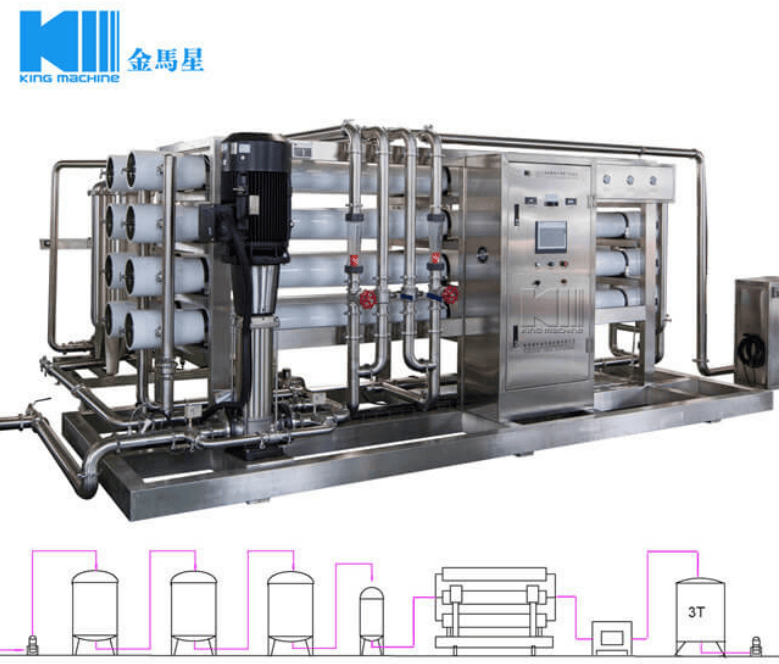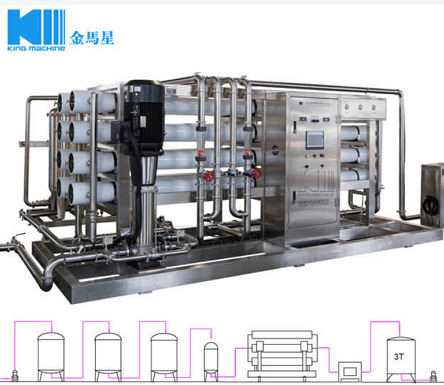News
Site Editor
 Site
/uploads/image/694e24f48271f.png
Nearly all bottled water is gotten from a ground source, in which there is minimal variance in its quality, and naturally less susceptible to pollution when compared to surface sources of water.
Site
/uploads/image/694e24f48271f.png
Nearly all bottled water is gotten from a ground source, in which there is minimal variance in its quality, and naturally less susceptible to pollution when compared to surface sources of water.
Common Water Treatment Plants for Bottled Water
Views: 2131
Author: Site Editor
Publish Time: 2021-09-27
Origin: Site
It is well known that before bottled water can be sold, it has to be tested and must meet regulatory requirements.
Nearly all bottled water is gotten from a ground source, in which there is minimal variance in its quality, and naturally less susceptible to pollution when compared to surface sources of water.
Nonetheless, groundwater can include enormous quantities of specific noxious waste, such as arsenic, nitrates. and radioactive substances.
They may also be exposed to pollution by human actions like industrial wastes, faulty septic tanks, underground chemical tanks.
Although bottled water is also obtained from surface water sources, they still have a steady taste compared to tap water.
Public water treatment plants that use surface water sources usually add more purification methods, such as disinfection and filtration.
A fluoridated bottled water gotten from a particular source of the water system must be shown on its label.
The major taste disparity between bottled water and tap water is the water treatment process. Tap water is disinfected with chlorine, ozone, chloramines that eliminate germs that cause disease.
Water treatment plants make use of such disinfectants due to their effectiveness and low cost, as they disinfect continuously through pipes that are linked to various business organizations and homes.
Bottled water is disinfected by water treatment plants that incorporate the use of chlorine dioxide or ultraviolet light rays. Despite the high cost of ozone, bottlers prefer it to chlorine as it doesn't give a taste as chlorine does.
Getting into the bottled water production business requires contacting a professional and reputable water treatment plant manufacturer. With this, you are certain of getting the best product.

Processes of Purifying Bottled Water
The following are the processes of purifying water:
§ Distillation
In this process, the water is treated by heating it to a high temperature.
Subsequently, the steam is condensed to eliminate impurities like asbestos, salts, metals, and other organic materials.
During distillation, microbes such as cryptosporidium are removed easily.
§ Micro-Filtration
Microscopic holes with screens are used to purify water as it flows through it.
The tinier the filter holes, the more impurities it will be able to remove.
A good and reliable filter will almost remove all microbes and chemical impurities.
Filter holes are measured in microns. Bear in mind that an absolute filter (larger hole) has a higher rating than (average hole).
Cryptosporidium can be eliminated with an absolute micron filter.
§ Reverse Osmosis
In this process, water is purified by forcing it under pressure through a membrane, and impurities are gathered as water flows.
In the reverse osmosis process, color, minerals, turbidity, organic and inorganic chemicals are also removed by the filtering action of the membrane.
§ Ultraviolet (UV) Light
Water is disinfected by passing it under ultraviolet light. However, it depends on the amount used.
§ Ozonation
Disinfecting and treating water with ozone eliminates any microbes present. More like ultraviolet light, it also depends on the dosage used.
Manufacturers of bottled water should operate their water treatment plants appropriately with established manufacturing guidelines and endeavor the products are made under hygienic environments.
In need of a quality water treatment plant?
Buying a quality water treatment plant from a reliable manufacturer gives you a guarantee of getting the finest of all plants with the evasion of system slowdown.
Kindly click here to place your order.








